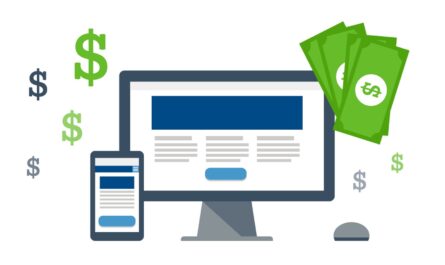In the digital age, the Internet has become an integral part of our daily lives, transforming how we communicate, work, and access information. With its vast and diverse population, Canada has embraced the Net and its technologies wholeheartedly. Currently, Canada boasts an user base of 36.89 million people. To put that into context, 94% of Canadians are connected to the Internet.
As one of the most technologically advanced nations in the world, Canada has witnessed a growing demand for various technologies that have revolutionized how its citizens interact with the digital world. Let’s take a look at some of these technologies.
High-Speed Internet Connectivity
With the increasing reliance on digital technologies for work, education, entertainment, and communication, Canadians seek faster and more reliable Internet services to meet their growing online needs.
Businesses across various sectors have also been seeking high-speed connectivity to support their operations and enhance productivity. Industries such as healthcare, finance, and technology heavily rely on fast and reliable Internet connections for data transmission, cloud-based services, and remote access to critical systems.
To cater to this growing demand, Canada’s government and private Internet service providers have been investing in expanding and improving infrastructure. The government aims to connect 98% of its population to high-speed network by 2026. By 2030, the goal is to ensure 100% of Canadians can access reasonably fast Internet.
According to Ookla, Canadians experienced the following connection speeds at the beginning of 2023:
- Median mobile connection speed via cellular networks: 82.68 Mbps.
- Median fixed connection speed: 136.87 Mbps.
Mobile Internet and 5G Connectivity

The proliferation of smartphones has led to significant demand for mobile services in Canada. Canadians increasingly rely on mobile Internet for communication, social networking, online shopping, and entertainment.
The emergence of 5G technology has further accelerated this trend, promising faster speeds, lower latency, and improved connectivity for a range of applications, including Internet of Things (IoT) devices and augmented reality.
In May 2023, the Canadian government announced a new framework for enhanced connectivity and innovative 5G applications. Here are the locations where 5G is available:
| Carrier | Network | 5G Locations |
|---|---|---|
| Bell Mobility | Bell | Select areas of Alberta, Quebec, Manitoba, Nova Scotia, Prince Edward Island, Saskatchewan, British Columbia, Ontario, New Brunswick, Newfoundland and Labrador |
| Rogers Wireless | Rogers | Select areas of Alberta, Quebec, Nova Scotia, Saskatchewan, British Columbia, Alberta, Manitoba, Ontario, New Brunswick, Newfoundland and Labrador, Prince Edward Island |
| Telus Mobility | Telus | Select areas of Alberta, Saskatchewan, Nova Scotia, Quebec, New Brunswick, Manitoba, Ontario, Prince Edward Island, British Columbia, Newfoundland and Labrador |
| SaskTel | SaskTel | Select areas of Saskatchewan |
| Videotron | Videotron | Select areas of Quebec |
| Eastlink | Eastlink | Select areas of Nova Scotia and New Brunswick |
| Freedom Mobile | Freedom and Videotron | Expected in select regions by 2024 |
Cloud Computing Technology
First, the demand for cloud computing has grown because it revolutionizes how Canadians store and access data, run applications, and manage IT resources.
Secondly, cloud computing has enabled Canadian businesses to streamline their operations, enhance collaboration, and reduce the need for physical infrastructure, significantly saving time and resources.
Equally, the Canadian government has been proactive in adopting cloud services to modernize its operations, enhance service delivery, and promote cost savings. The 2023 Cloud Adoption Strategy Update can attest to this.
Virtual Reality (VR) and Augmented Reality (AR)
In Canada, VR and AR technologies have come a long way since their initial prominence in the gaming and entertainment industries. While the gaming sector continues to grow, the adoption and demand for VR and AR have extended beyond entertainment. Case in point:
- Canadian retailers have embraced VR and AR tools to enhance their customers’ online shopping experience. By utilizing these tools, shoppers can customize products like furniture, visualizing them within their room’s interior before making a purchase. Additionally, consumers can virtually try on clothes to ensure the perfect fit and style, boosting confidence in their online purchases.
- Industries such as automotive and construction are also benefiting from VR and AR solutions. Engineers and designers use digital environments to create and test prototypes, optimizing the design process and reducing costs associated with producing physical prototypes that may fail.
- In the Canadian healthcare sector, VR and AR have become valuable training tools for medical personnel. They can practice surgical procedures and receive anatomical reconstructions of patient bodies, aiding in surgical planning and execution.
IoB (Internet of Behaviours)
As the digital landscape expands, staying informed about consumer behaviour has become crucial for Canadian businesses aiming to maintain a competitive edge The Internet of Behaviours (IoB) is proving to be an invaluable tool, offering a deeper understanding of consumer interactions, preferences, and purchasing patterns.
Similar to the Internet of Things (IoT), IoB goes beyond simple data collection from IoT and online sources. It delves into consumer behaviour analysis from a psychological perspective, providing companies with comprehensive insights into consumers’ purchasing journeys. This data-driven approach empowers Canadian companies to improve user experiences and engage with consumers more meaningfully and personally.
Blockchain Technology

When someone mentions blockchain, it’s often associated with Bitcoin, given its initial prominence in the banking and financial sectors. However, blockchain extends beyond digital currency.
Blockchain is a distributed ledger technology that mainly facilitates the recording and tracking transactions and assets in various industries. According to Gartner, it is estimated to generate more than $3.1 trillion in business value by 2030. Its decentralized model enables effective credit risk management and ensures secure, immutable, and private customer profiling.
Today, countless Canadians are leveraging blockchain technology as it promotes transparency and accountability in online transactions.
For instance, blockchain is used in the manufacturing sector to engineer robust supply chain management systems. Such platforms enable efficient tracking of goods, provide improved visibility for business users, and create reliable records of processes.
In other words, blockchain’s versatility is becoming increasingly evident beyond its association with digital currencies as Canadians explore its potential to enhance various business operations, offering a powerful tool to foster trust and efficiency across multiple industries.
Cybersecurity Internet Solutions
As Canadians increasingly rely on the Internet for various aspects of life, the need for robust cybersecurity measures has intensified. Did you know that, globally, a cyberattack happens every 39 seconds?
Cyber threats like data breaches, ransomware attacks, and phishing attempts pose a significant risk to individuals and organizations alike. In fact, according to a report by Mastercard, Canadian businesses face an average data breach cost of $6 million annually.
Therefore, the demand for cybersecurity Internet solutions, such as antivirus software, firewalls, encryption tools, and advanced threat detection systems, has grown considerably.
Quantum Technology and Computing
The demand for quantum technology and computing in Canada has steadily increased in recent years. Quantum technology, which harnesses the principles of quantum mechanics, offers the potential for groundbreaking advancements in various fields, from computing and cryptography to communication and sensing.
According to research by KPMG, nearly 60% of Canadian organizations anticipate that quantum computers will become mainstream by 2030. The study surveyed 250 large corporations, with 90 in Canada and 160 in the U.S.
The findings reveal a strong interest in quantum technology among Canadian companies, with 85% of respondents planning to invest in quantum within the next five years. Among the key areas of interest, 24% of companies aim to utilize quantum computing to enhance business practices, including manufacturing, logistics, and distribution. Additionally, 19% are looking to bolster security measures, while 18% seek to enhance AI capabilities through quantum technology.
Earlier this year, on May 31, the Canadian government invested a significant C$360 million in the National Quantum Strategy. This funding is dedicated to supporting quantum research, fostering the development and retention of quantum talent, and accelerating the commercialization of quantum products.
Conclusion
Canada has witnessed remarkable advancements in Internet technologies. These technologies are shaping how Canadians live, work, and interact in the digital world. From the game-changing potential of 5G and the widespread adoption of IoB to the transformative impact of AI and cloud computing, these technologies have reshaped various industries, setting the stage for further innovation in the future.




